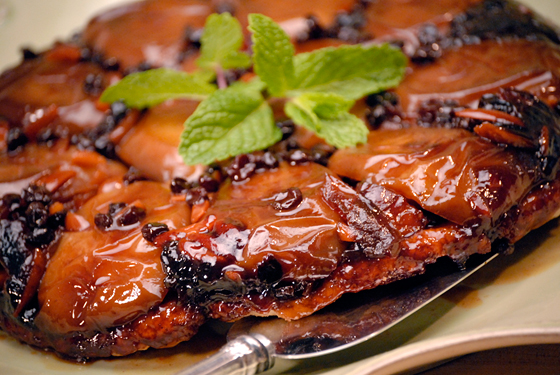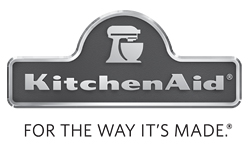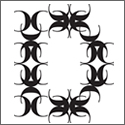Tarte Tatin
Episode 103: Sweets For My Sweet
Recipe: Tarte Tatin
Tarte Tatin, the famous upside-down caramelized apple tart created many years ago by the two Tatin sisters, is an example of a dish that originated in a home kitchen and eventually made its way into most of the great restaurants.
I cook the apples with the skins on to give a chewier texture. Dried currants (raisins can be substituted), slivered almonds, and dried apricots fill the gaps between the apple chunks, and additional apples on top create a flat surface for the pastry to sit on, which giving the tart a nicer shape when it is unmolded.
The tart should be served at room temperature or slightly warm. If you make it ahead, keep it in the skillet. The caramel may stick to the bottom, but the dough on top will stay dry and crumbly. Then, at serving time, put the tart on top of the stove over medium heat for a couple of minutes, shaking the pan to melt the caramel so the tart will unmold easily.
Serves 8 to 10
DOUGH
1 cup all-purpose flour
6 tablespoons (3/4 stick) very cold unsalted butter, cut into 1/4-inch-thick slivers
1/8 teaspoon salt
½ teaspoon sugar
3 tablespoons ice-cold water
FILLING
3 pounds Russet, Pippin, or Golden Delicious apples (6–8)
1/4 cup sugar
1/2 cup plus 2 tablespoons water
1 tablespoon fresh lemon juice
1/4 cup slivered almonds
3 tablespoons unsalted butter
1/2 cup sliced dried apricots
1/3 cup dried currants
1/2 cup water
2 teaspoons sugar
GARNISH
1 cup heavy cream
FOR THE DOUGH: Put the flour in a food processor. Add the butter. Add the salt and sugar and process for 5 to 10 seconds. Pieces of butter should still be visible in the dough. Add the cold water and process for another 10 seconds, just until the mixture starts gathering together. Turn the dough out onto a large piece of plastic wrap, press it into a disk, wrap in the plastic, and refrigerate.
FOR THE FILLING: Remove the cores from the apples at the stem end and at the opposite end, using your thumb as a pivot and rotating the tip of a sharp paring knife as you cut into the apple. Quarter the apples and remove the cores.
Combine the sugar, 2 tablespoons of the water, and lemon juice in a 12-inch ovenproof nonstick skillet and cook until the mixture becomes a caramel, about 4 minutes. Add the slivered almonds and cook for 10 seconds. Remove from the heat and let cool for 5 minutes so it hardens.
Arrange the apple quarters on top of the set caramel, placing them side by side and skin side down in one layer, making two concentric circles, with a piece of apple in the center. (You will use 6 to 7 of the apples, or 20 to 25 pieces.) Sprinkle the butter, apricots, and currants on top.
Slice the remainder of the apples thin. (You should have about 3 cups.) Arrange on top of the circles of apples to fill the skillet completely.
Add the remaining 1/2 cup water, bring to a boil, cover, and boil gently 10 minutes. The object here is to soften the apples so they sink down and form themselves into a flat surface. Remove the lid and continue cooking over medium heat for 7 to 8 minutes, until there is no liquid visible when you incline the pan slightly. This indicates that most of the water and juices has boiled away and what remains is the sugar and butter, which are beginning to caramelize again. Set aside. (The apples can be made several hours ahead.)
Preheat the oven to 400 degrees.
Remove the dough from the plastic wrap and place it on a board. Sprinkle with a little flour and roll out to a very thin circle (no more than 1/8 inch thick). Trim the edges and then fold the dough in on itself to form an edge that is a little thicker all around the edges.
Place the circle of dough on top. Press it down with your hands so it lies completely flat. Pierce all over with a fork and sprinkle with the 2 teaspoons sugar, which will caramelize and glaze the dough during cooking.
Bake for 45 minutes. Let cool until warm or at room temperature.
At serving time, place the skillet back on medium heat and cook, shaking the pan lightly until the caramel melts. Place a flat serving dish on top of the skillet and turn the tart upside down to unmold.
Beat the heavy cream until firm but not too stiff (no sugar is needed, since the apples are sweet).
Cut the tart into wedges and serve with a good tablespoon of whipped cream per serving.
Copyright © 2011 by Jacques Pépin. Used by permission of Houghton Mifflin Harcourt. All rights reserved.











